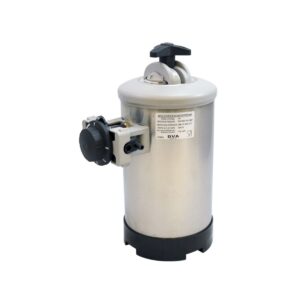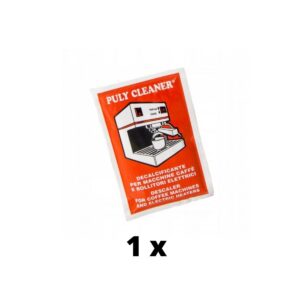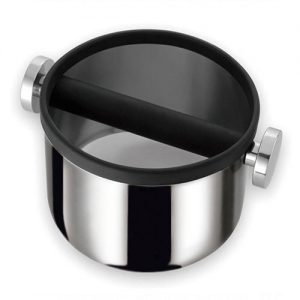Description
Etching pencil is an indispensable accessory for baristas who are interested in latte art. This simple device is designed for drawing on milk foam. Surely many coffee lovers saw amazing patterns on an espresso or latte that amaze the imagination. The etching pencil is able to turn even the simplest drawing on coffee into a real masterpiece. With it, you can create even the most detailed images. Usually this accessory is made of stainless steel or wood, of course, stainless steel is durable, so you can use a pencil for a long time. In addition, pencils for etching can be of different colors: red, blue, etc. By the way, the way of drawing on coffee drinks etching was proposed by the Australians, who perform this procedure using a special pencil. If you are a beginner barista or drawing on coffee is your hobby, then you can buy a pencil for etching in our store. Successful experiments!
It is unknown who first came to draw on coffee, but now nothing will stop the bartenders. And coffee lovers are ready to give 100 euro for a cup of coffee with a painted professional barista. At first, for beauty in cappuccino foam, they simply pierced a few holes or sprinkled it with cinnamon. Then, to the delight of customers and themselves in the joy of a barista (coffee bartenders), they came up with drawing with the help of pitchers (milkmen) three main figures: “apple”, “heart” and “leaf”. And it started … Animals, flowers and even silhouettes of girls appeared on the coffee penquest. All these experiments resulted in a whole direction and so appeared latte art – the art of drawing on the surface of coffee. Now the best coffee bartenders are going to the annual championships in drawing for coffee. There, the coffee gurus create new designs and application techniques. The top flight is considered to be the “Taj Mahal”, invented by Australian barista George Sabbads. One of the latest world latte art championships was won by Australian Scotty Calagan, who designed 6 cups with an identical pattern, drawing behind his back. A world record today are 7 roses, “blossomed” in a 150 ml cappuccino cup.
Technology of applying latte art or how to draw on coffee
For drawing you need to make espresso coffee and high-quality milk foam. It turns out the whole thing in her bubbles. Before preparing the foam, milk is cooled to 2-4 degrees. After that, a modern coffee maker equipped with a steam boiler is used. Through this device steam is supplied under pressure, which warms up and whips the foam. Milk should have time to heat up to 60-70 degrees, but no more. Then a part of the milk will turn into a dense, delicate and, most importantly, fine bubble foam. Milk, whipped in any other way, will give only big bubbles. On such a foam pattern quickly settles and crawls. Quality foam keeps the picture for 10-12 minutes. Even if most of the coffee is drunk during this time, the drawing will settle on the bottom of the cup, almost unchanged.
Before pouring the milk into the coffee, it should stand for 30 seconds in the milk jug. After that you can draw. According to the Italian method (pitching) – coffee or milk stream. If you make a cappuccino, drawing begins with the first drop of milk froth that falls on the coffee. If we are talking about coffee latte, then draw a stream of coffee over the milk foam. You can draw in the Australian way (etching), using, besides the pitcher, any available means: wooden skewers, Chinese sticks, coffee spoons, chocolate and fruit syrups, cinnamon, etc.
Barista secrets
If you sprinkle coffee with cocoa powder, the pattern will be brighter. It should also be understood that coffee made in a coffee maker already has a foam. Thanks to her, cocoa does not mix with coffee, but it will dye the milk froth beige.
The most important thing is to know the laws of foam life. For the barista, the basic truth is that the sharply drawn line-jet “pulls” the pattern in the direction where the last drop fell. You need to get comfortable with the pitcher, it comes only after two or three months of hard training. If you tilt the pitcher to the cup too low, too much foam will fall into it, and if it is high, coffee will be poured with milk without froth. The pitcher needs to be held in such a way that both foam and milk are poured out evenly from it — only in this situation can the drawing succeed, and the coffee will not lose one of its ingredients.
Barista sure figures can “cultivate” the taste of coffee. Depending on the pattern, there is a differently located cream (coffee crema) in which the main taste is concentrated. For example, in the classic version of the “heart” by pouring milk into the center of a cup of cream evenly nailed to the walls, increasing the aroma and bitterness of coffee. Lovers of soft taste can pour a little milk into espresso, mix it with cream, draw a leaf on this base, and the bitterness will go away










